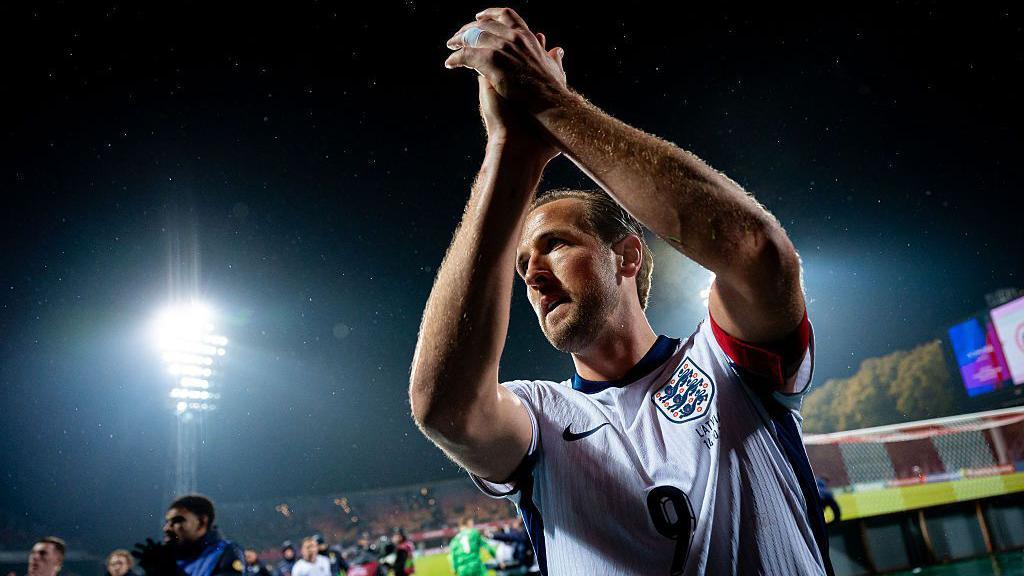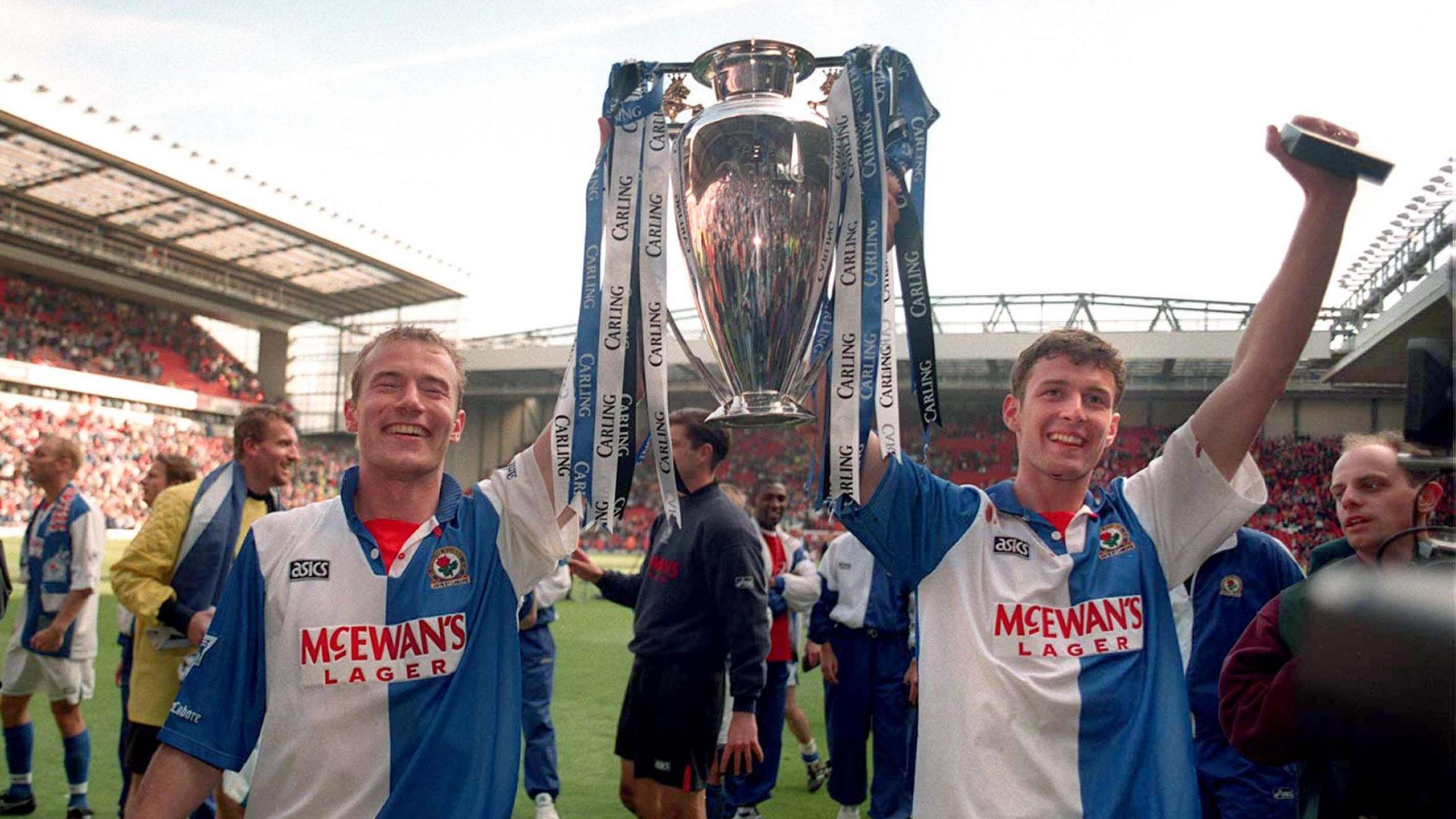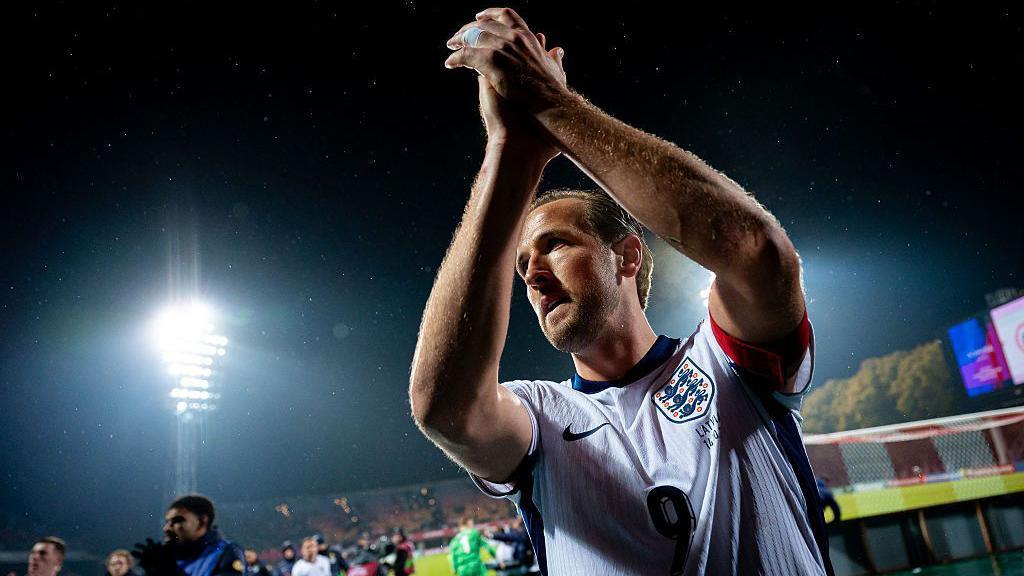And then there was one.
Thomas Tuchel’s most recent squad has highlighted the ongoing shortage of English centre-forwards, with Harry Kane being the sole genuine striker among the 25-man roster.
This situation is, in part, due to injuries, as Tuchel noted that Ollie Watkins has been rested to address a persistent problem, while Dominic Solanke has been out since August and Liam Delap has just returned to play for Chelsea after a two-month absence.
It’s also important to acknowledge that some adaptable forwards have been included. Marcus Rashford, Jarrod Bowen, Phil Foden, and Anthony Gordon may not fit the conventional number nine mold, but they could be tasked with playing centrally against Serbia and Albania this week.
Nevertheless, the sight of Kane as the only authentic striker is a clear signal of how much England leans on the 32-year-old as the centerpiece of their offense, and the lack of additional alternatives to spearhead their attack is a genuine concern ahead of next summer’s World Cup, and especially further down the line.

Kane has been scoring consistently in the Bundesliga with Bayern Munich this season – however, only eight English strikers have played in the Premier League so far this campaign, and 22-year-old Delap stands as the only one below the age of 26.
There seems to be no emerging talent behind Delap waiting for an opportunity either.
The England Under-21s participated in last summer’s European Championship without a recognized striker, and their most recent squad includes only one, Manchester City’s Divin Mubama, 21, who is yet to score in the Premier League and is currently loaned to Championship team Stoke.
So, what happened to all the English number nines, and why is the nation not producing conventional strikers anymore?
Fewer games, and different systems
There are certainly English strikers available, but examining their statistics offers little optimism.
Danny Welbeck, who will turn 35 soon, and 33-year-old Callum Wilson are the only players to have scored more than one goal in the Premier League this season.
Among those being considered by Tuchel playing abroad, Ivan Toney is the most effective in this campaign with 11 goals in 15 appearances for Saudi Pro League club Al-Ahli, which he joined in 2024.
Tuchel selected the 29-year-old for the matches against Andorra and Senegal in June, but Toney only appeared as an 88th-minute substitute in the Senegal friendly and has not been called up since.
This lack of number nines is not due to a sudden decline in numbers. Rather, it reflects a trend that has been present for some time.
Last season, merely three English strikers – Watkins (16), Delap (12), and Welbeck (10) scored 10 or more Premier League goals, marking the lowest total ever.
In stark contrast to the inaugural Premier League season in 1992-93, which saw 20 English strikers exceed the 10-goal mark.
However, what has been a gradual decline has recently accelerated sharply. Last season, English strikers netted only 67 goals, less than half the tally from 2020-21.
Kane’s move from Tottenham to Germany certainly contributed, but he transferred to Bayern in 2023, and English strikers still managed to score 96 goals in 2023-24.
This season, however, is shaping up to be even poorer.
Thus far, English strikers have combined for just 11 goals – and they’re projected to reach a meager total of 38 collectively if the current pace continues.
That’s only four more than Andy Cole and Alan Shearer each netted as they led the Premier League scoring charts three decades ago.
Cole scored 34 goals for Newcastle in 1993-94, and Shearer matched that number for Blackburn the subsequent season – still the all-time record for English strikers in the Premier League era, but achieved in 42-game seasons.
The downward trend of English strikers can be attributed to multiple factors, according to BBC analyst Chris Sutton, who surpassed the 10-goal mark in four distinct Premier League seasons, including a 25-goal season with Norwich in 1993-94, and an 18-goal campaign with Blackburn that earned him a share of the Golden Boot in 1997-98.
One aspect is the limited appearances. From the table above, only Welbeck, Watkins, and Calvert-Lewin have started more than three league matches this season, while Nketiah, Solanke, and Barnes have not started any.
«Looking back to the 1990s, players like Jurgen Klinsmann and Dennis Bergkamp began arriving from abroad, but the total number of foreign strikers was much lower,» Sutton explained.
«The leading striker in my era was Shearer, but if you scanned through the teams, there were an astonishing number of exceptional English centre-forwards like Ian Wright, Les Ferdinand, Andy Cole, Teddy Sheringham, Robbie Fowler, and David Hirst – you could also include Stan Collymore and Dion Dublin on that list.
«There was a remarkable abundance of them, even before Michael Owen emerged ahead of the 1998 World Cup, and they were all different types of striker.
«One difference now is that they were regularly playing each week, as opposed to how many English centre-forwards start for their clubs in the Premier League now? It’s due to the caliber that clubs can attract from other regions.
«Another shift we’ve witnessed concerns team formations. I am not suggesting everyone employed a rigid 4-4-2 back in my day, because that’s not accurate, but far fewer teams field two strikers nowadays.
«In other ways, things have come full circle because if you examine teams like Manchester City, Arsenal, and Manchester United, the prominent number nine is making a comeback. There are plenty of strikers in the Premier League, just not many who are English.»
Did people stop wanting to be a striker?
Shearer, who formed the lethal ‘SAS’ partnership with Sutton to lead Blackburn to the Premier League title in 1995, believes the tactical changes observed in the past 10 to 15 years are the primary cause of the present strikers’ shortage.
«Due to the way kids have been trained and the coaching they receive, nobody wants to play as a centre-forward since you hardly ever get a touch,» the former England captain stated on The Rest is Football podcast.
«Instead, coaches prefer a pass from the keeper, a pass sideways, then a pass into midfield… and it often comes back. As a centre-forward, you start to feel ‘I am not getting involved’.
«I firmly believe that this contributes to the scarcity of number nines, particularly in our country.»

Sutton concurs with his former strike partner, and while contemporary wide forwards like Rashford and Bukayo Saka are netting more goals than traditional wingers did, he perceives the current situation as «a significant issue».
«Alan makes a valid observation regarding how everyone wants to play with the ball these days,» Sutton continued. «Everyone aspires to be a creative player positioned in wide areas, or be a left-footer cutting in off the right wing. Those players can score as well, yet it differs greatly from having someone capable of leading the line.»
Owen, who shared the Premier League Golden Boot with Sutton as a teenager in 1997-98 and won the award the following year, feels that had he emerged in the current era, he would not be deemed a striker.
«In today’s football, I believe I would have been one of the wide players,» he remarked on the Rio Ferdinand Presents podcast. «I don’t think I had the physical presence to draw two defenders, so I suppose I would have operated from the left.
«What troubles me regarding strikers is that I invested my entire career honing my craft, playing off other players. Now, how will we recreate those partnerships? I’ve been waiting and waiting for teams to revert to featuring two strikers, but will that ever take place?»

‘We’ve got Kane, but then what?’
Employing two strikers is not feasible for Tuchel this week, at least not in the manner that Owen suggests.
«Just considering the numbers, the situation is incomparable to the 1990s,» Sutton remarked. «However, when you actually enumerate the players we possessed during that era, the quality was astonishing and many of them didn’t even feature prominently for England.
«Ferdinand won just 17 caps, yet he was incredible. Fowler, who garnered slightly more, was perhaps the most natural finisher you’ll ever come across. But they both found themselves behind Shearer, who finished with machine-like precision.»
Sutton himself only earned one full cap, coming off the bench against Cameroon in November 1997, before falling out with then England coach Glenn Hoddle after declining a call-up to the England B team in February 1998.
«I can make light of my disagreements with Hoddle, but in today’s landscape, if you’re a decent striker and a World Cup is on the horizon, you’d be thrilled,» he added. «We’ve got Kane, but then what?
«If you are an English centre-forward now and can accurately kick a ball, you likely have a great shot at World Cup selection. I’m tempted to dust my boots off myself.»

Related topics
- Everton
- Football
- England Men’s Football Team







